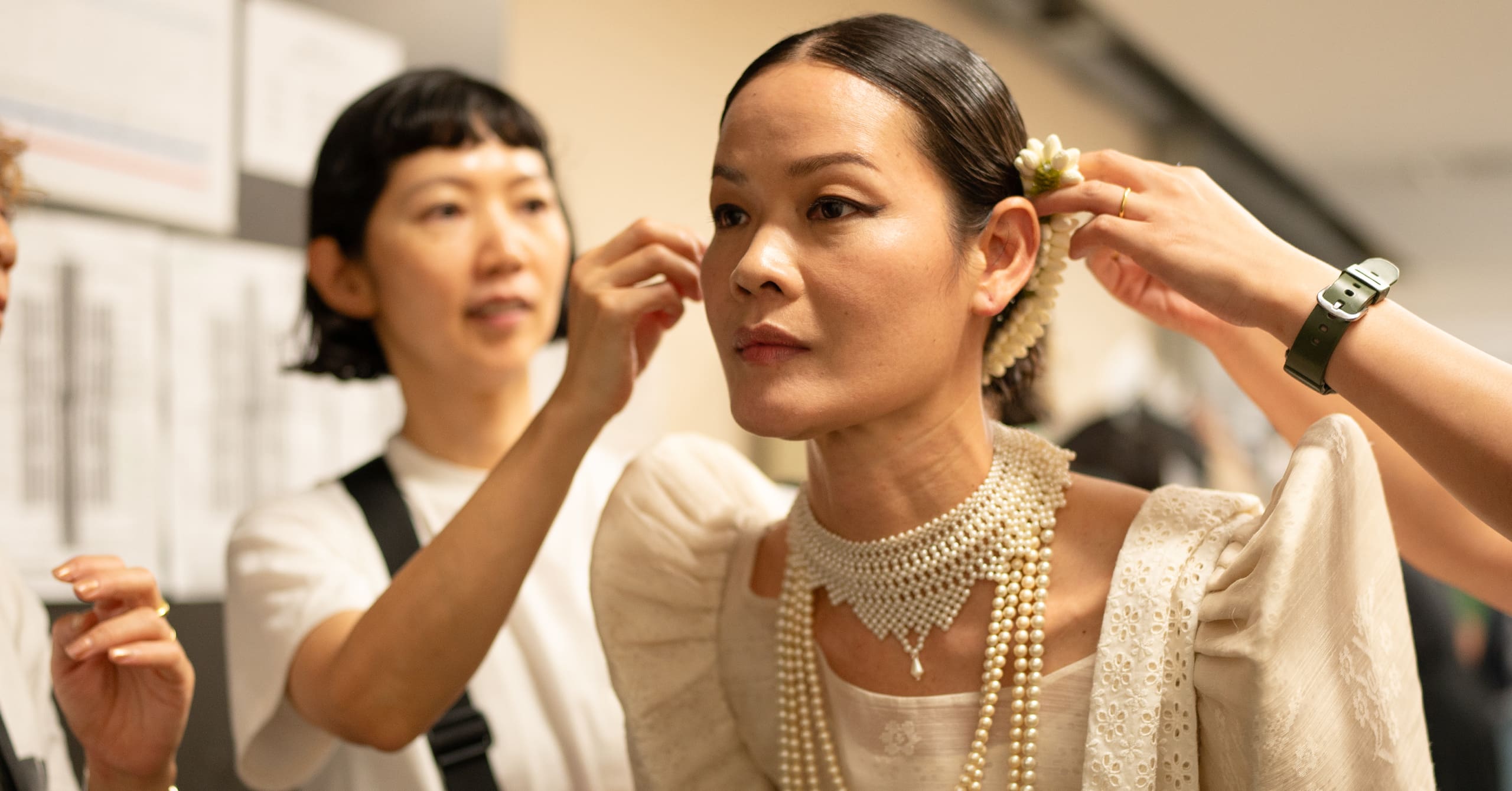Jo Ann Bitagcol gets ready backstage before walking for Joey Samson. Photo by Kim Montes
Jo Ann Bitagcol gets ready backstage before walking for Joey Samson. Photo by Kim Montes
The balintawak takes form on a global stage through the work of acclaimed designers Dennis Lustico, Chito Vijandre and Ricky Toledo, and Joey Samson.
With its fluttering butterfly sleeves, delicate blouses in renditions of piña and cañamazo, and printed cotton skirts affixed with the tapis, the balintawak is a cornerstone of Philippine fashion and its design language. While the traditional dress remains timeless in its silhouette, it has seen an ever-evolving play on color and technique, most notably at the biennial terno-making convention Ternocon, which contextualizes the terno and its styles in the present. This year, the reimagining of the balintawak was uplifted on a global scale with the recent showcase “Bench Presents Ternocon” at the Spring/Summer 2024 Rakuten Fashion Week in Tokyo, Japan.
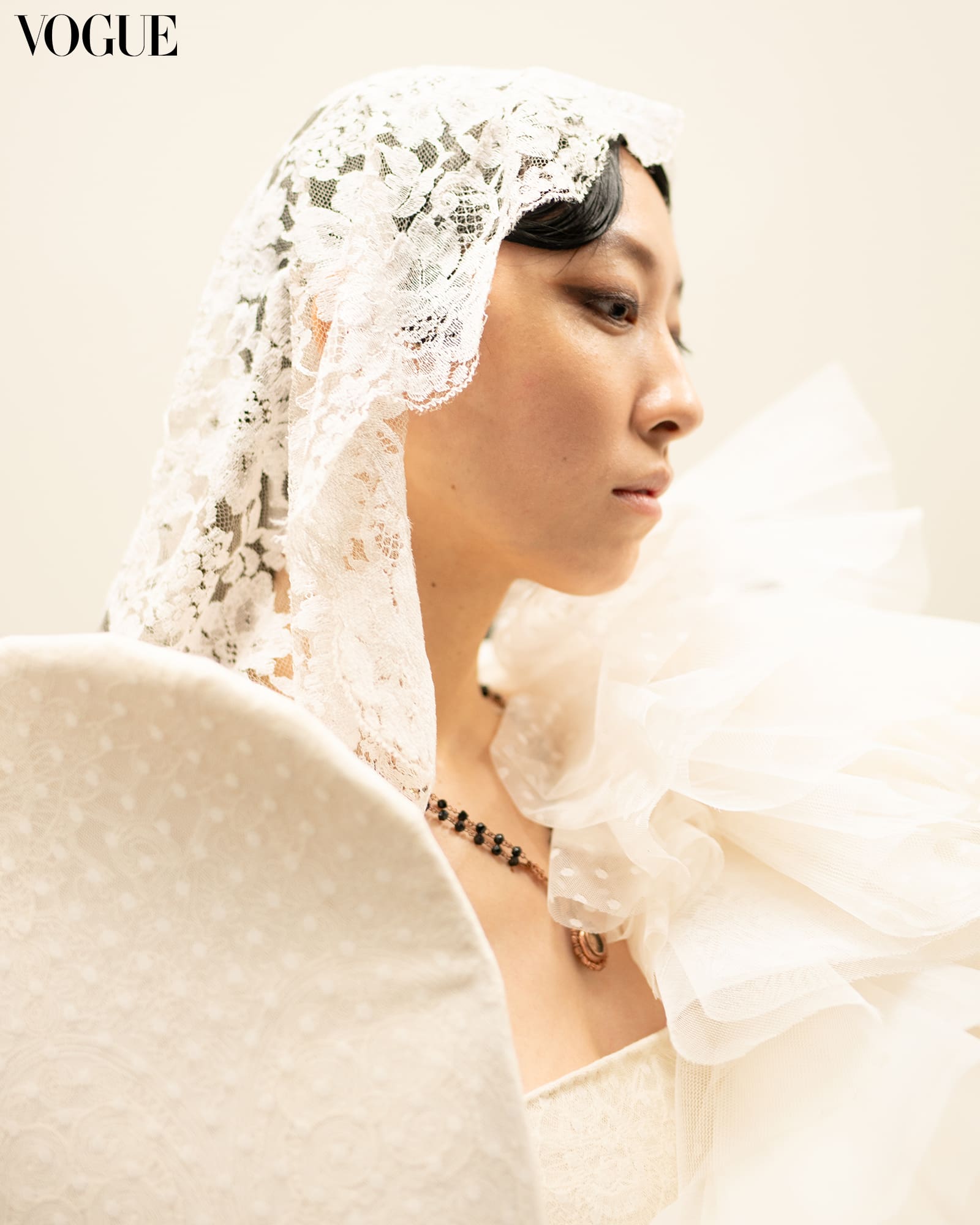
The initiative was sparked by Bench founder Ben Chan, who has consistently brought emerging Filipino talent to the forefront of Tokyo Fashion Week. This time around, he invited the acclaimed designers and mentors of the third edition of Ternocon Dennis Lustico, Chito Vijandre and Ricky Toledo, and Joey Samson to the stage. For “Bench Presents Ternocon,” the four designers expanded on their capsule collections from Ternocon 3, reimagined for Japanese audiences.

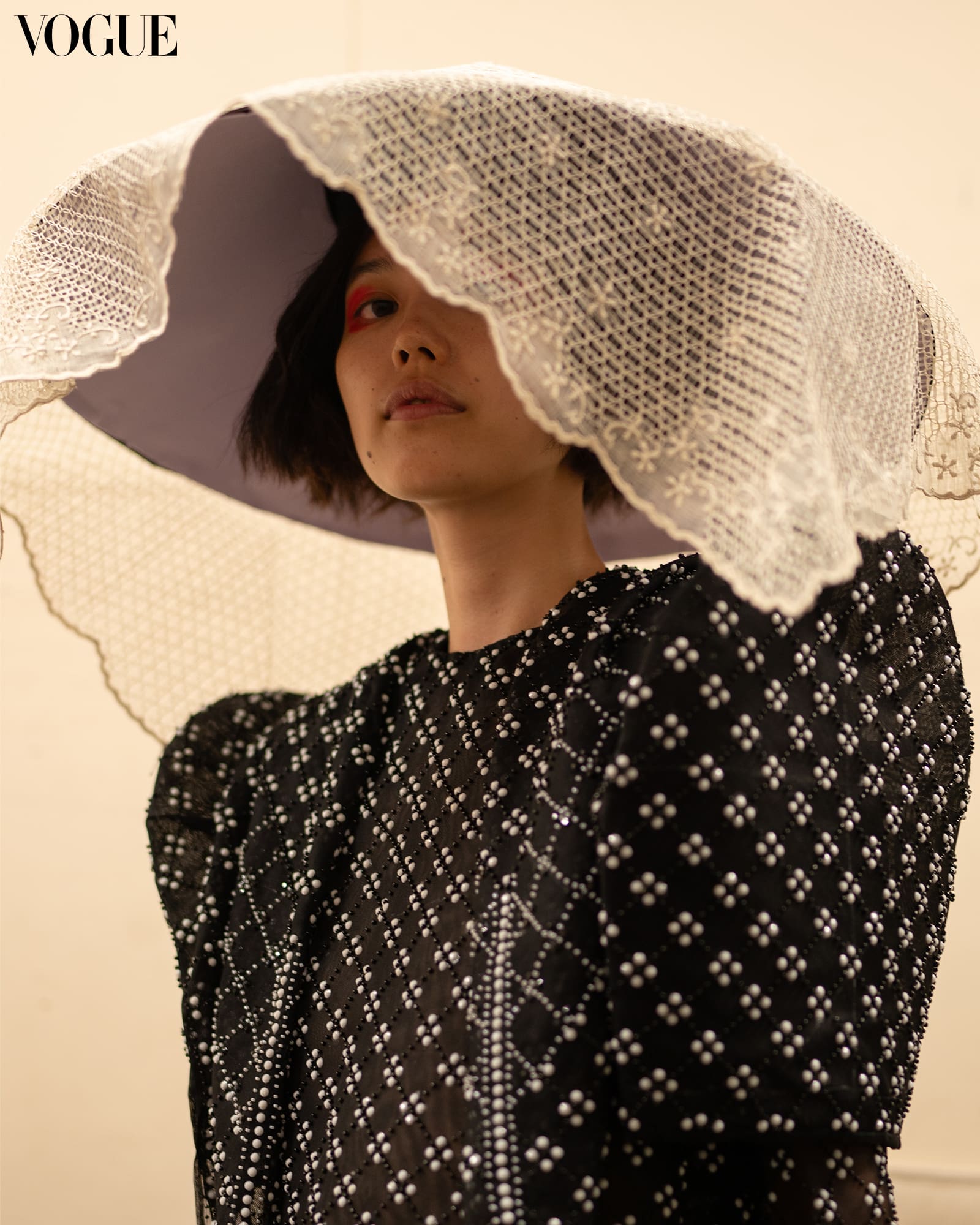
Ternocon 3 artistic director Gino Gonzales told Vogue Philippines that he encouraged the designers to add new pieces to their collections for two reasons: first, “to illustrate the basic principles behind the Philippine terno for the benefit of the mainly Japanese audience,” and second, “to draw connections with Japanese culture by introducing Japanese material or sensibilities to their collections.” The resulting presentation centered the balintawak within a dialogue between contrast and saturation, texture and silhouette.
Dennis Lustico
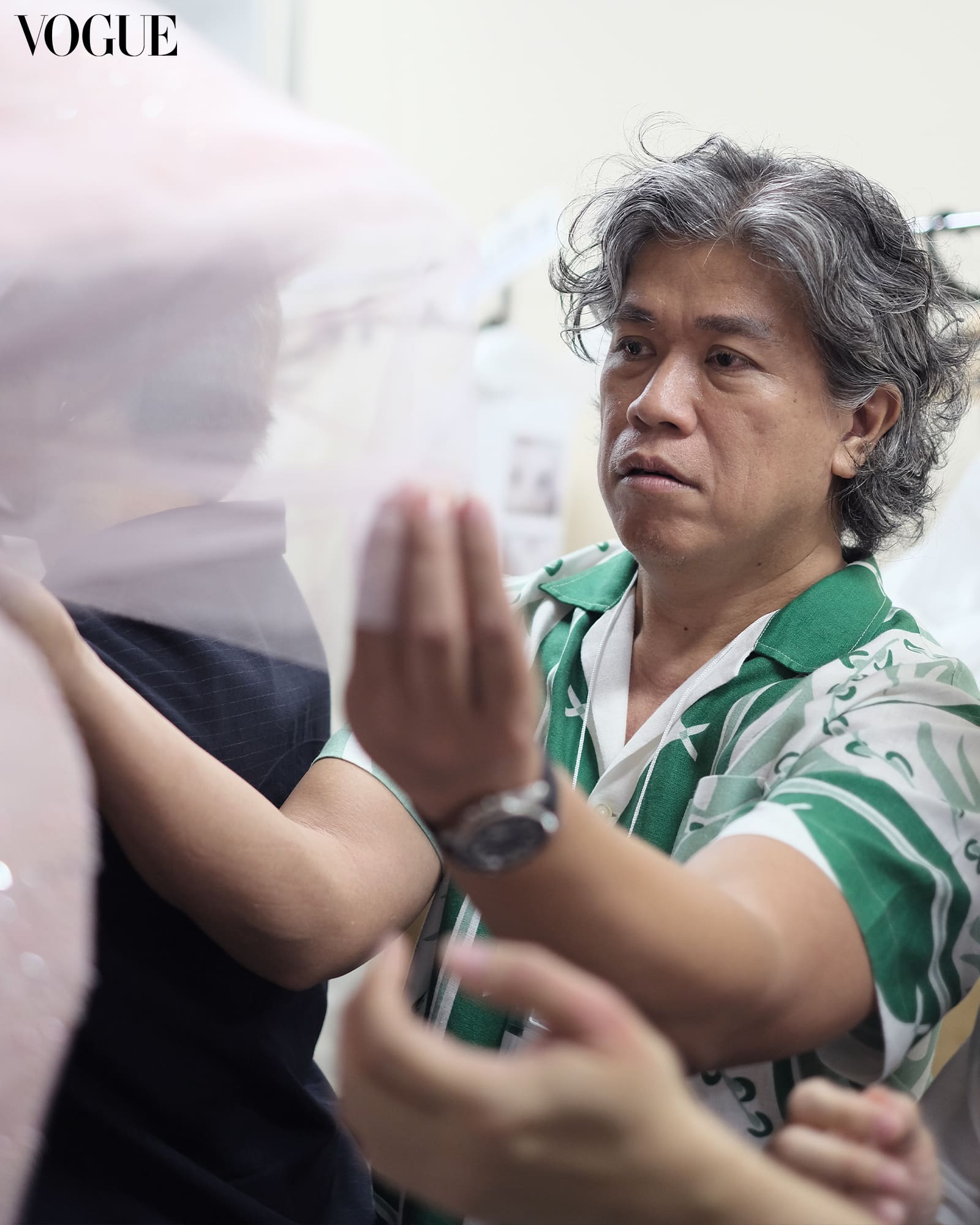
Dennis Lustico opened the show with draped fabrications awash with colors in full saturation; vibrant shades of green, hot pink, and orange are contrasted with the soft, muted tones of lavender and baby blue. Within this exciting color palette, the designer also explored texture, draping rich fabric—from taffeta and silk organza to duchesse satin, point d’espirit, and lace—to refresh the terno silhouette. Piña blouses feature meticulous beadwork, and on two looks, long sleeves that stretch from beneath the glittering butterfly sleeves.
Lustico drew inspiration from his lofty travels across the Philippines, using ostrich feathers, beads, and rhinestones to convey clusters of coconut trees. Hats fashioned from raffia and dried flowers and draped with lace, on the other hand, were inspired by the peaked rooves of domestic architecture.
Joey Samson
The next collection that graced the runway was by Joey Samson. Titled “Ang Mga Lihim ni José Rizal (Letters from Jose Rizal),” the collection was inspired by Philippine national hero Dr. Jose Rizal and his many muses: his mother Teodora; the women penned in his novels, most notably Maria Clara; O Sei San, the woman who taught him the art of Japanese ink painting; and even the personification of our motherland, Inang Bayan. With the barong as his signature, it also made a necessary appearance in Tokyo, albeit in different forms. For menswear, he was inspired by Rizal and his younger self Pepe, his brother Paciano, and his two protagonists Crisostomo Ibarra and Elias.
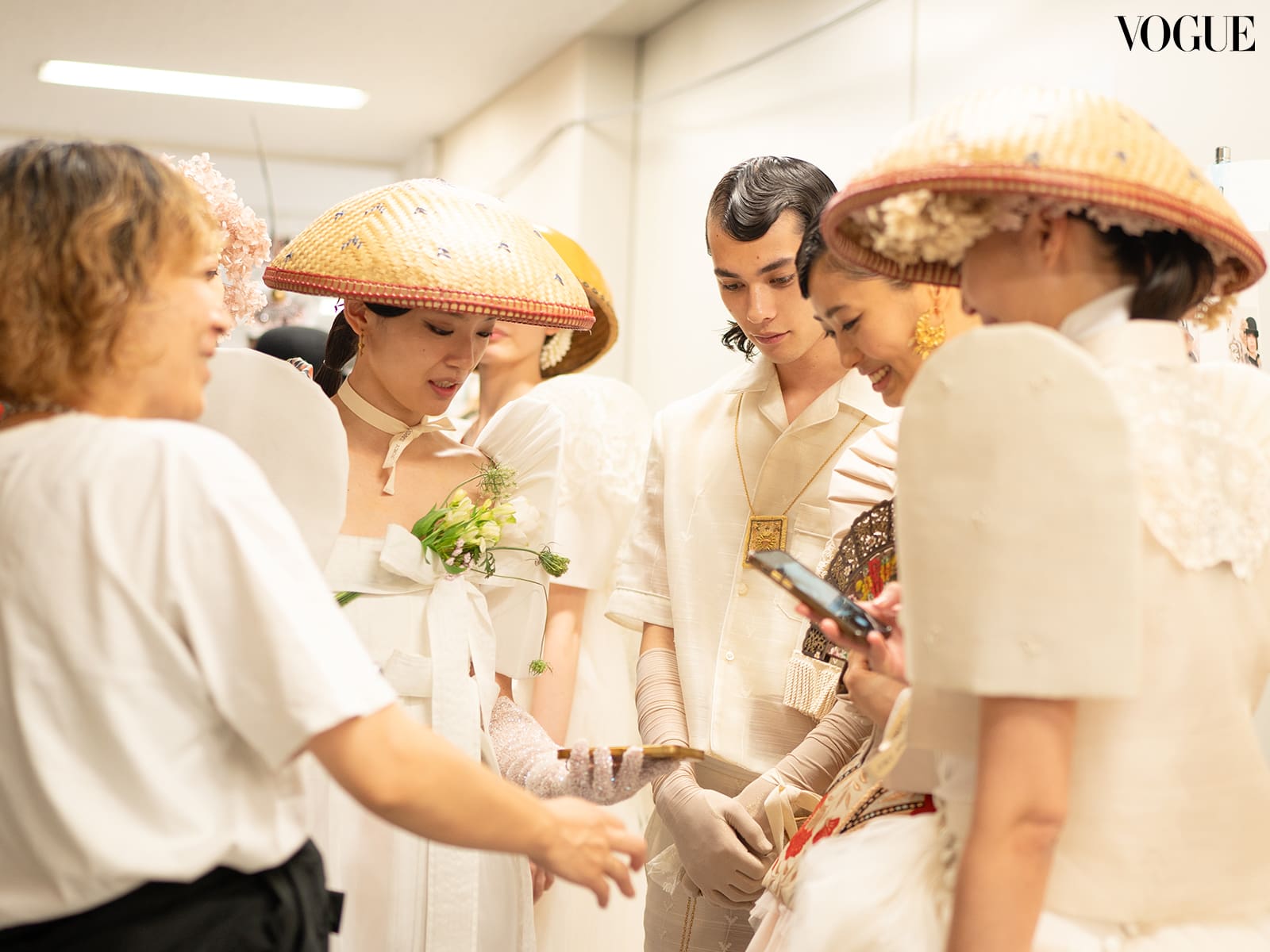
With eight looks dedicated to womenswear and three to men’s, Samson’s ensembles blurred the gender lines between the familiar sensibilities of the balintawak and the barong. For instance, the pañuelo, a fichu typically worn around the shoulders when wearing the balintawak, and the tapis, worn on top of women’s skirts, were added to his menswear pieces. Men’s collars from the barong and Western suit jackets were affixed onto terno blouses, and he also used the method of pin-tucking men’s tuxedo shirts to exaggerate terno silhouettes. Striking this fine balance between masculine and feminine is something Samson does with ease, it seems, as the looks carried with them a certain air of effortlessness—as if that was the way they were traditionally designed.
Gonzales added that the jewelry for this collection comprised select pieces from Unang Panahon Arts and Antiques. He told Vogue Philippines, “We wanted to feature heritage pieces: tamburin necklaces, llaveros, brooches, [and more to] give the styling a certain depth.”
Chito Vijandre and Ricky Toledo
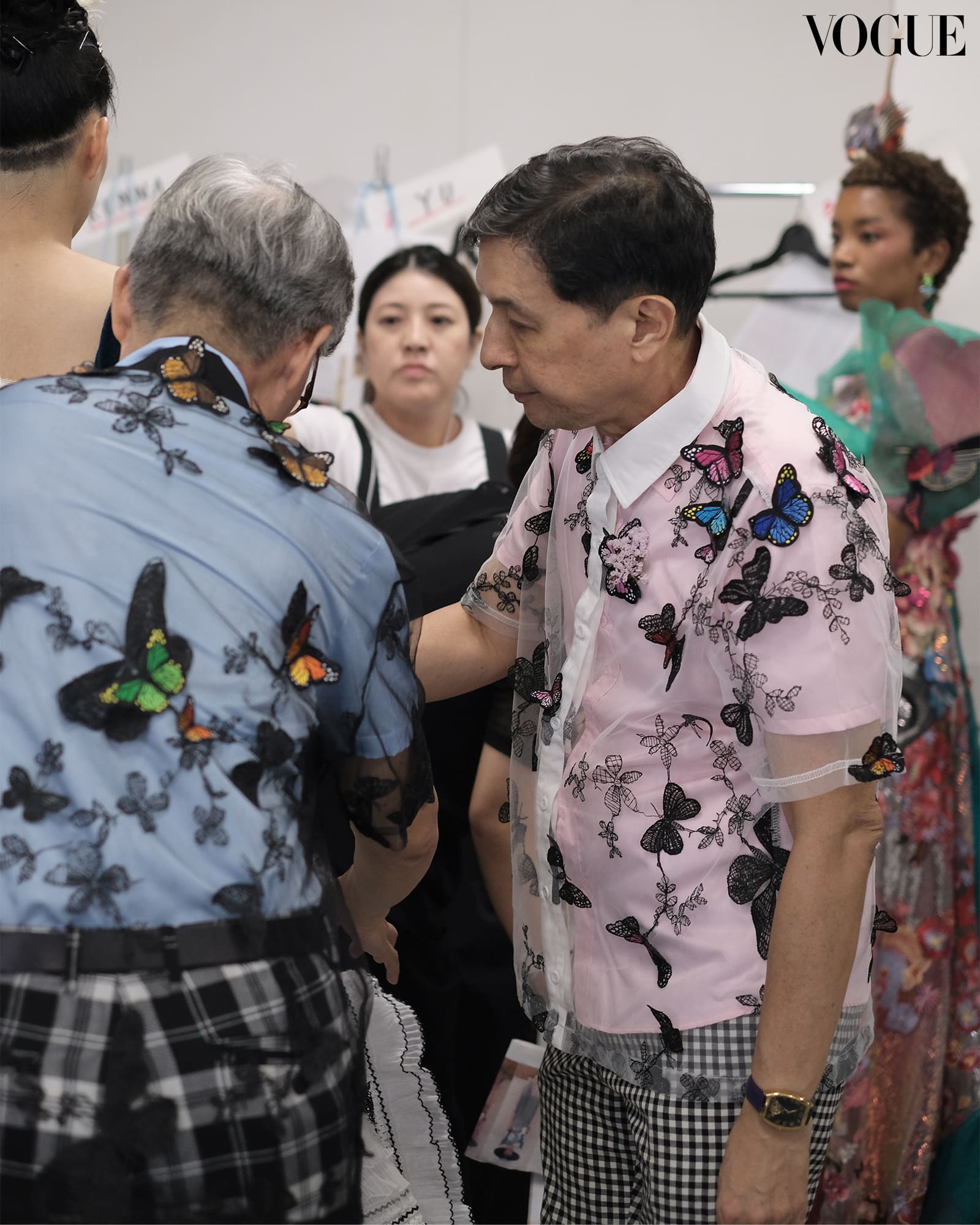
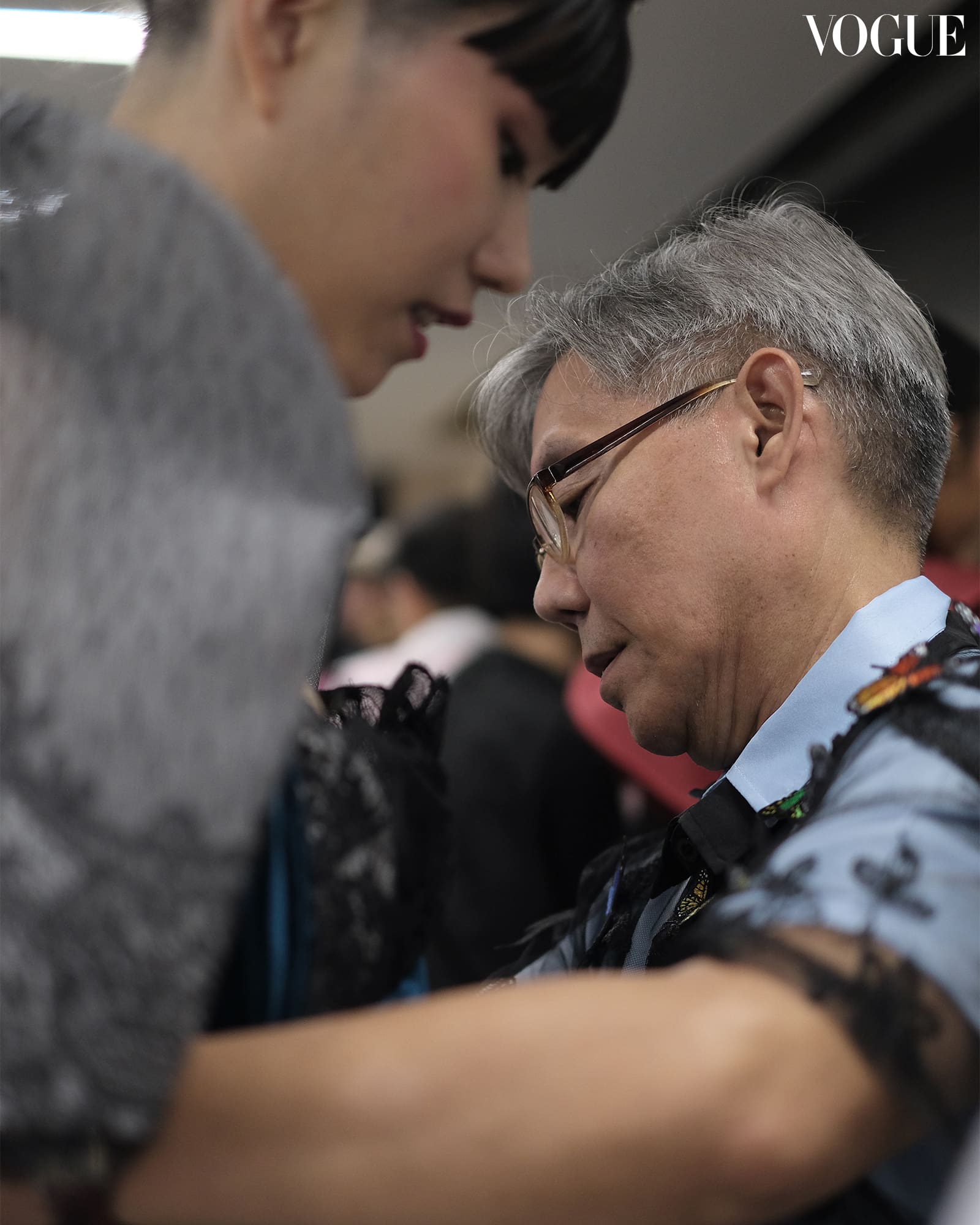
Designers Chito Vijandre and Ricky Toledo ended the show in three suites, titled Chulas, Dalagang Bukid, and Señoritas. Completed over a period of two years, the designers imbued each piece with meticulous detail. There was a clear reference to the excess of 18th-century fashion, as the designers took inspiration from key figure Marie Antoinette; even still, woven into these pieces are the familiar peaks of butterfly sleeves, allowing audiences to imagine the silhouette anew.
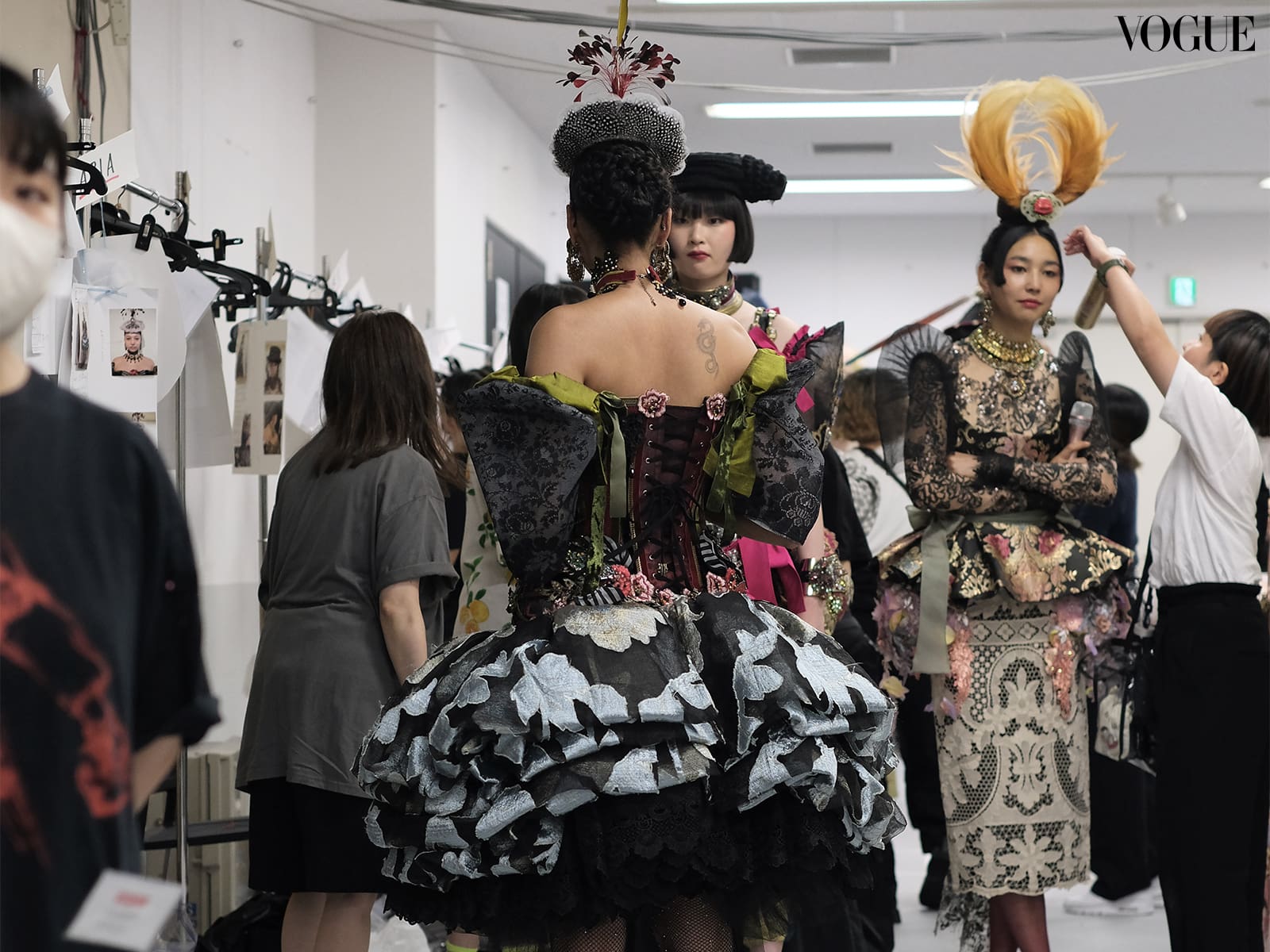
For the show, Vijandre and Toledo were inspired by Pinoy pop culture and Harajuku girls, conveyed through expert layering of vintage textiles, trailing prints on prints, playful corsetry, and emblazoned iconography. Bisaya, Tagalog, and English catchphrases were beaded onto the dresses for a final touch. For the designer duo, it was an infectious “celebration of multicultural influences, maximalism, pop art, kitsch, and the joy of karaoke,” as they announced. As models carried microphones as they walked, their enthusiasm transcended the runway.
Staging the show
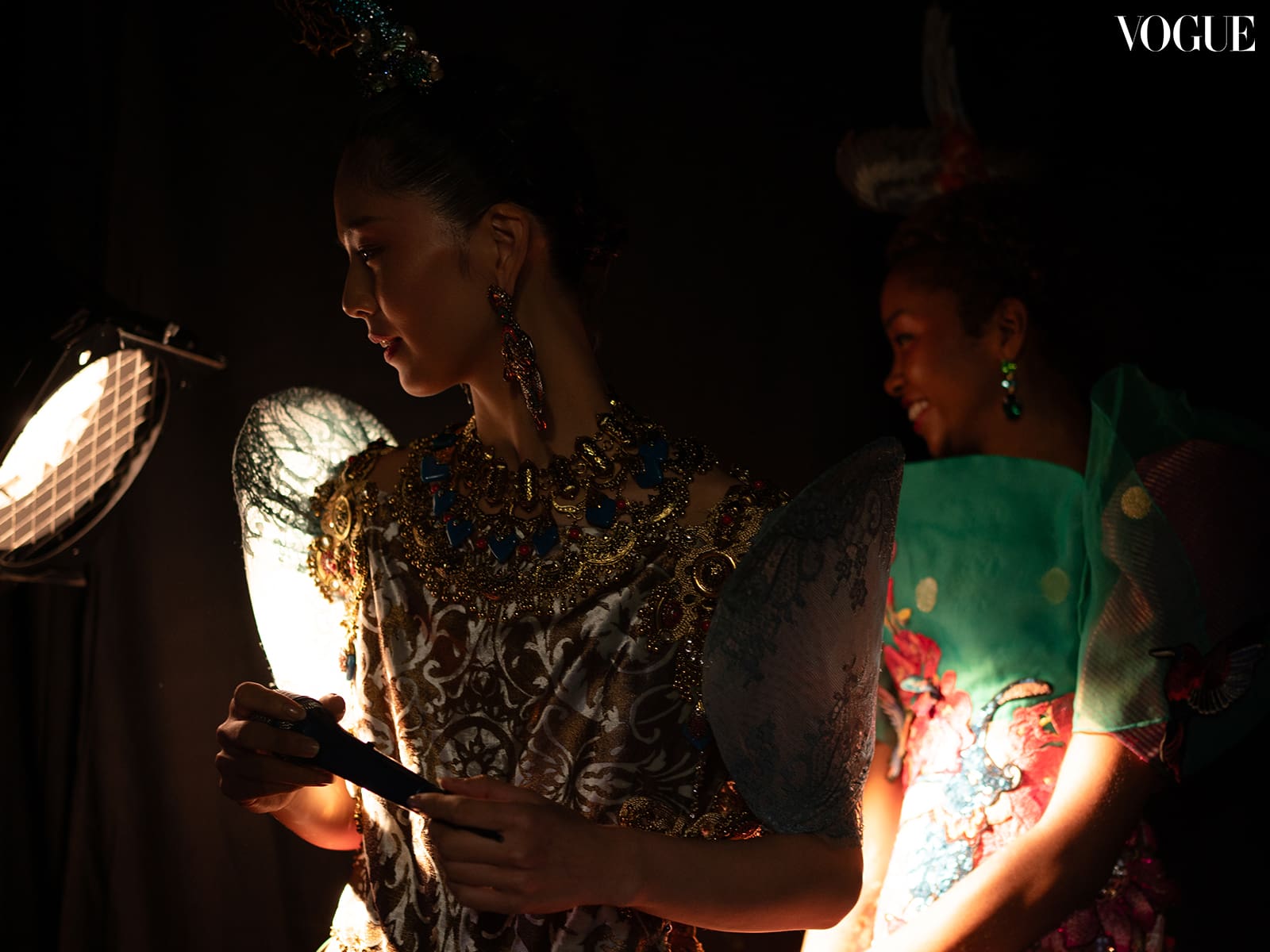
For Gonzales, staging the “Bench Presents Ternocon” showcase was a real labor of love. “I was very happy working with a group of troopers,” Gonzales said. “We had no assistants and did everything ourselves in terms of moving twenty-plus suitcases, doing fittings and alterations, creating new headpieces on the spot, and packing up everything again. The Bayanihan spirit was palpable.”

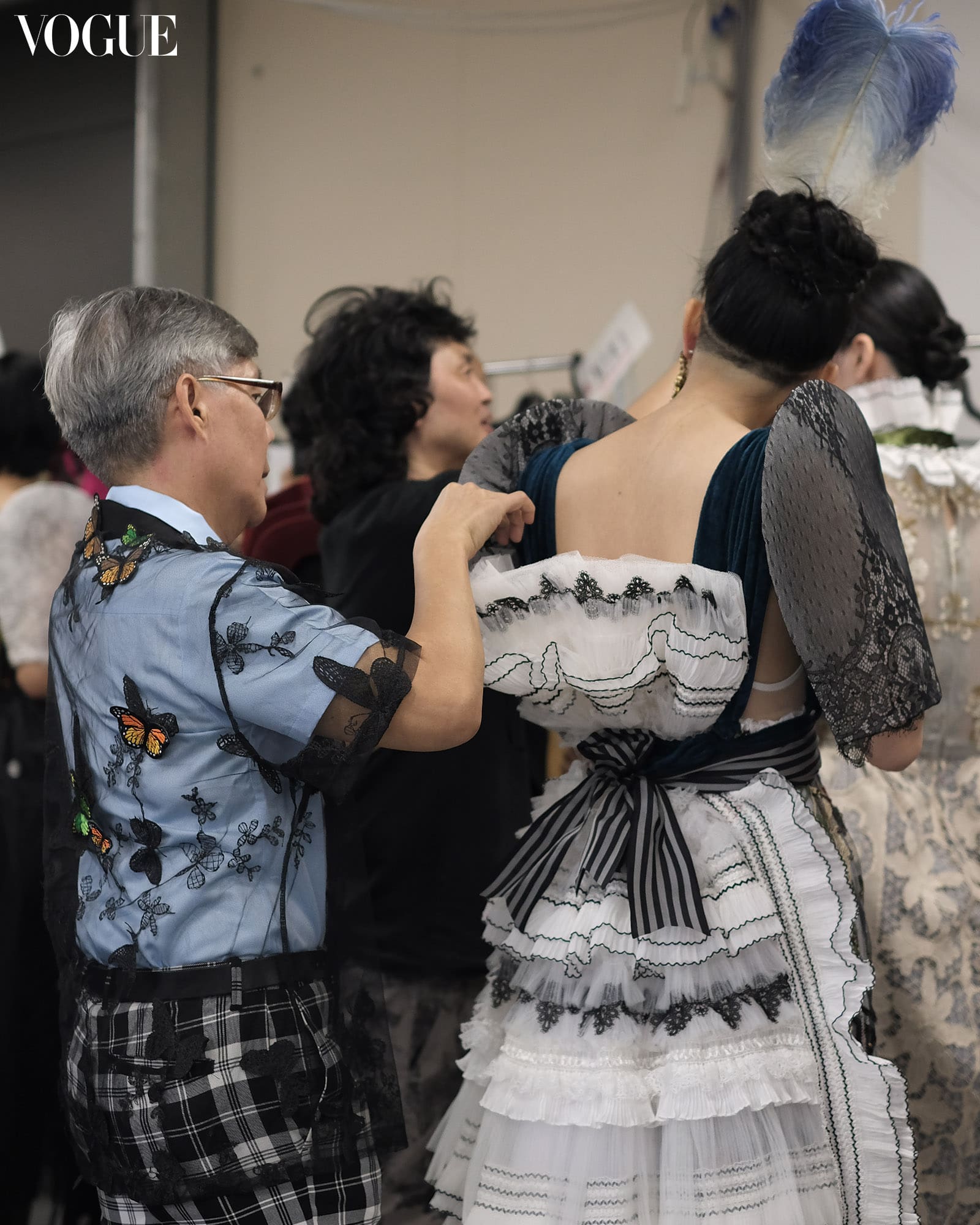
Even the hand props provided for the collections were made on the spot by Gonzales and Ternocon 3 head stylist Noel Manapat when they arrived in the city. “I had to dismantle a bamboo umbrella made by artisans in Bulacan the night before the trip,” Gonzales explained, as it didn’t fit into any of the team’s suitcases. “I had to do light carpentry work when I arrived in Tokyo. It was a do-or-die attitude.”
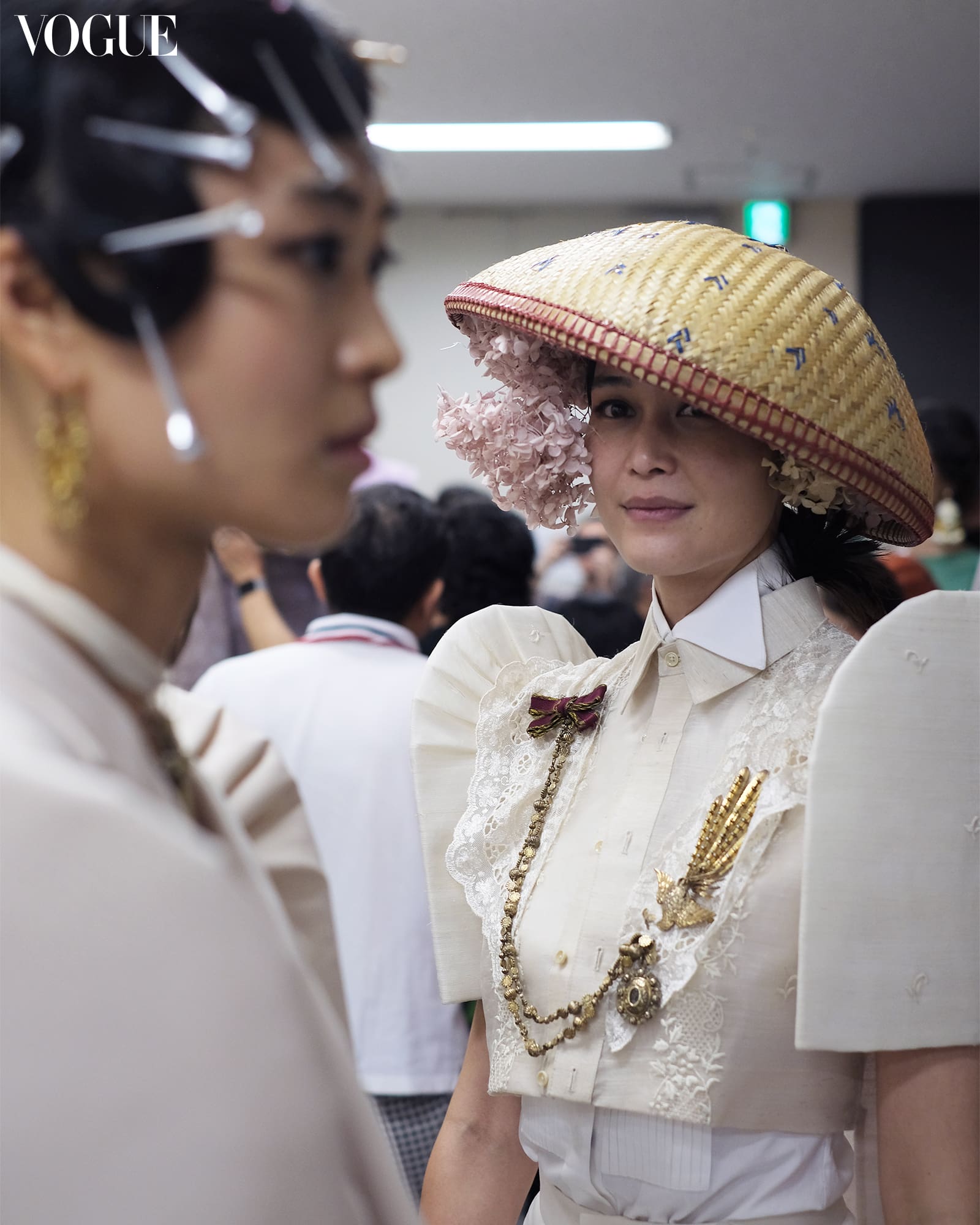
And at the space provided for Rakuten Fashion Week, the runway didn’t allow for a set to be built. Gonzales said that they were “totally reliant on the soundscape” to convey the feeling of each designer’s collection. The music prepared by Melvin Mojica first transported guests to the Philippine countryside for Lustico’s presentation, then to the “milieu” of Noli Me Tangere and El Filibusterismo for Samson’s, and finally, to a noisy karaoke bar for Vijandre and Toledo’s.
One particularly special aspect of the show was Jo Ann Bitagcol’s runway appearance. The only model from the Philippines to walk the show, creative director and photographer (and most recently, Vogue Philippines’ September 2023 cover star) arrived in Tokyo right after the Vogue Philippines Anniversary Gala just in time for rehearsals. “She had to absorb all our pahabol (last-minute requests),” Gonzales mused.
Introducing the terno to the world
Ultimately, the creators and mentors of Ternocon 3, along with their Japanese collaborators, celebrated a successful show, showcasing Philippine artistry and design on an international platform. For Gonzales, this is only the beginning. “We were very proud of our culture and what these designers came up with in terms of reinterpreting that heritage. For many years, we’ve been trying to help young Filipinos appreciate the Philippine dress, and to a certain degree, it’s been successful in encouraging Filipinos to wear the terno, albeit in different forms. So, for after Ternocon’s third season, it’s time to showcase it on a global platform.”
He continues, “I think the most important part of this whole effort to bring Ternocon to Tokyo is the clear signal that we are proud of our culture. And we are ready to step forward with it.”
